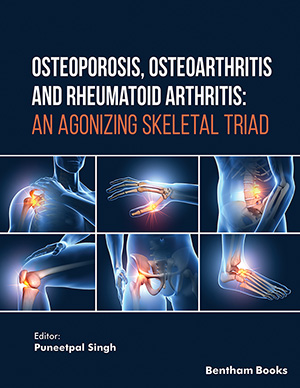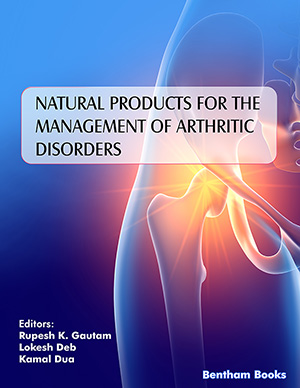Abstract
Introduction: Generally, patients with chronic rheumatic diseases use complementary and alternative medicine (CAM) in addition to their conventional treatments to manage their health. Discussing these treatments with their physician is still rare, which might be directly related to patients’ trust toward them.
Aim: The primary objective of this study was to assess the association between patients’ trust in their physician and the use of complementary and alternative medicine among patients with chronic inflammatory rheumatic diseases. As secondary objectives, to estimate the prevalence of CAM use, and to identify the associated factors with their use and with trust in physicians.
Methods: This is a cross-sectional study, which included patients with established chronic inflammatory rheumatic diseases, at the University Hospital Center in Tangier. The questionnaire included demographic and clinical information, use of conventional therapy, complementary and alternative therapy, as well as interpersonal trust in patient-physician relationships using the Trust in Physician Scale (TPS). A regression analysis was conducted to identify factors associated with CAM use and with trust in physicians.
Results: The study included 189 patients. 57.14% of patients reported using complementary medicine at least once, most patients were women (77.78%), mean age was 46.67 ± 13.25 years with an average course of the disease of 11.11 ± 9.23 years. The most frequently used CAM treatments were cupping therapy, massage and the ingestion of a mixture of plants. Mean ± SD Trust in Physician Scale was 47.64 ± 7.2. There was no significant difference between CAM users vs. non-users (48.08 ± 6.9 vs 47.04 ± 7.4; p = 0.35). In uni and multivariate analysis, a low level of education was significantly associated with the use of CAM. However, no statistically significant difference was found with trust in physicians (OR = 1.020, 95% CI (0.978-1.063), p = 0.354).
Conclusion: CAM therapy is common in patients with chronic inflammatory rheumatic diseases. No statistically significant association was found with trust in physicians, it was rather observed with level of education.
Keywords: CAM therapy, patient-physician relationships, rheumatic diseases, TPS, cupping therapy, level of education.
[http://dx.doi.org/10.1089/acm.2006.12.805] [PMID: 17034287]
[http://dx.doi.org/10.1016/j.gtc.2017.08.001] [PMID: 29173516]
[http://dx.doi.org/10.1093/ecam/nen023] [PMID: 18955327]
[http://dx.doi.org/10.4103/0253-7613.153418] [PMID: 25878370]
[http://dx.doi.org/10.1186/s12906-016-1195-9] [PMID: 27460643]
[http://dx.doi.org/10.1007/s10067-020-05054-y] [PMID: 32385761]
[http://dx.doi.org/10.4103/0971-5916.154510] [PMID: 25857501]
[http://dx.doi.org/10.1016/j.reuma.2015.10.011] [PMID: 26711840]
[http://dx.doi.org/10.24398/A.83.2012]
[http://dx.doi.org/10.2147/PPA.S179031] [PMID: 30349205]
[http://dx.doi.org/10.1016/j.crohns.2009.11.011] [PMID: 21122517]
[http://dx.doi.org/10.1002/art.10925] [PMID: 12579593]
[http://dx.doi.org/10.1002/art.21988] [PMID: 16739207]
[http://dx.doi.org/10.1016/j.rcreu.2020.06.008]
[http://dx.doi.org/10.1002/art.1780310302] [PMID: 3358796]
[http://dx.doi.org/10.1002/art.27584] [PMID: 20872595]
[http://dx.doi.org/10.1136/ard.2009.108217] [PMID: 19297345]
[http://dx.doi.org/10.1016/j.berh.2004.08.003] [PMID: 15588970]
[http://dx.doi.org/10.2466/pr0.1990.67.3f.1091] [PMID: 2084735]
[http://dx.doi.org/10.1037/1040-3590.7.4.524]
[http://dx.doi.org/10.1186/s12991-017-0155-1] [PMID: 28878812]
[http://dx.doi.org/10.1080/08870449908407311]
[http://dx.doi.org/10.7326/0003-4819-131-6-199909210-00003] [PMID: 10498556]
[http://dx.doi.org/10.1016/j.jsps.2019.07.002] [PMID: 31997900]
[http://dx.doi.org/10.1007/s10067-007-0646-6] [PMID: 17541497]
[http://dx.doi.org/10.1007/s10067-008-1029-3] [PMID: 18985421]
[http://dx.doi.org/10.1111/j.1365-2702.2012.04169.x] [PMID: 22776021]
[http://dx.doi.org/10.3109/s10165-006-0521-3] [PMID: 17164996]
[http://dx.doi.org/10.1155/2021/6619243]
[http://dx.doi.org/10.5152/eurjrheum.2021.20194] [PMID: 35110135]
[http://dx.doi.org/10.4103/1117-1936.170303] [PMID: 21445112]
[http://dx.doi.org/10.3899/jrheum.141447] [PMID: 26329343]













